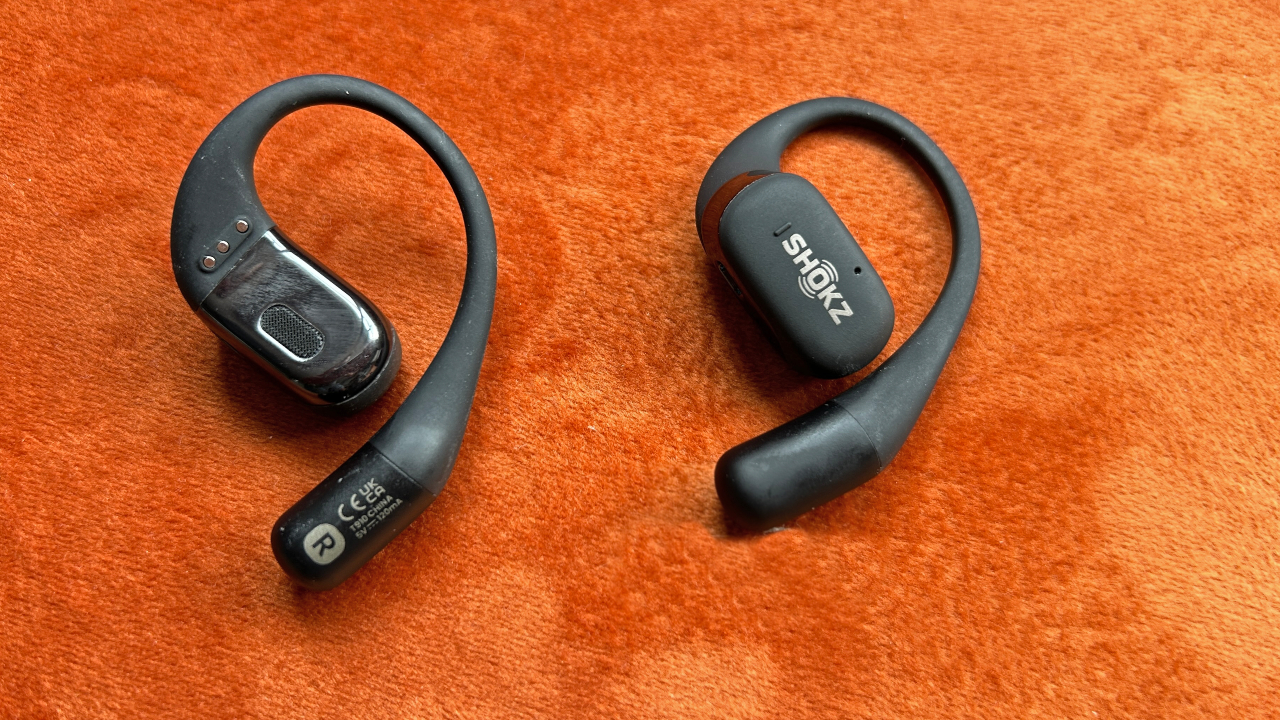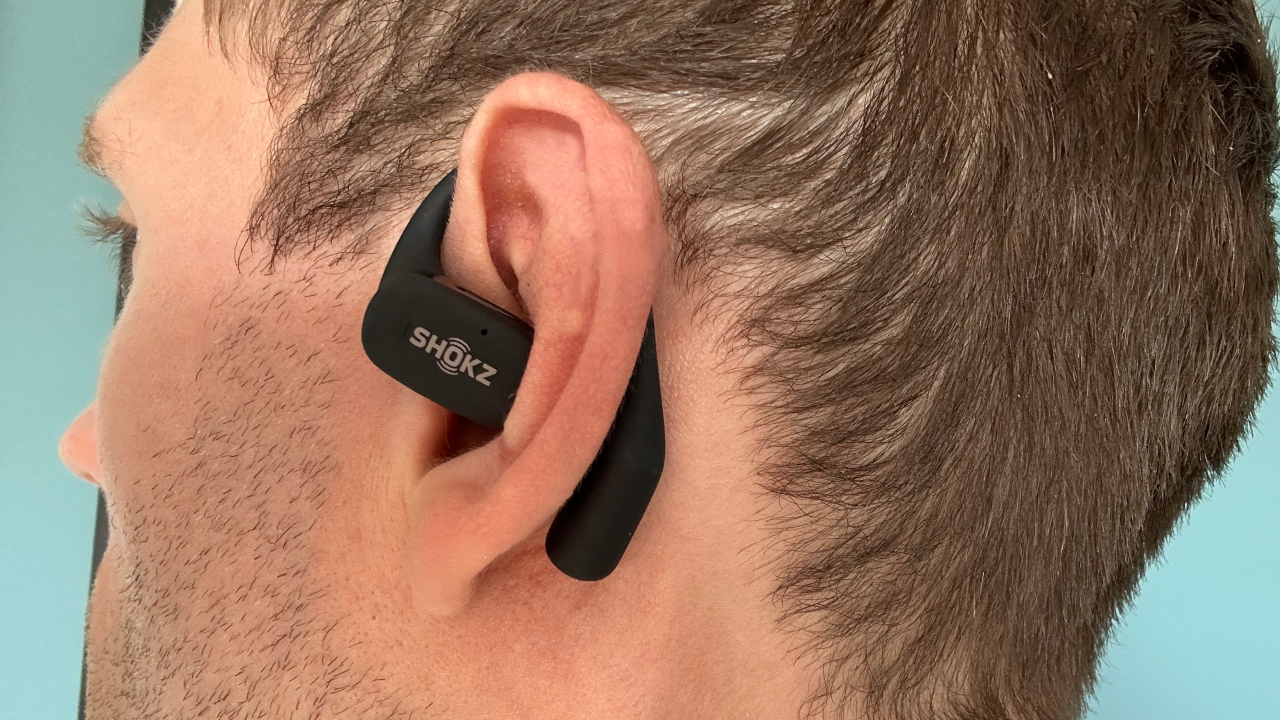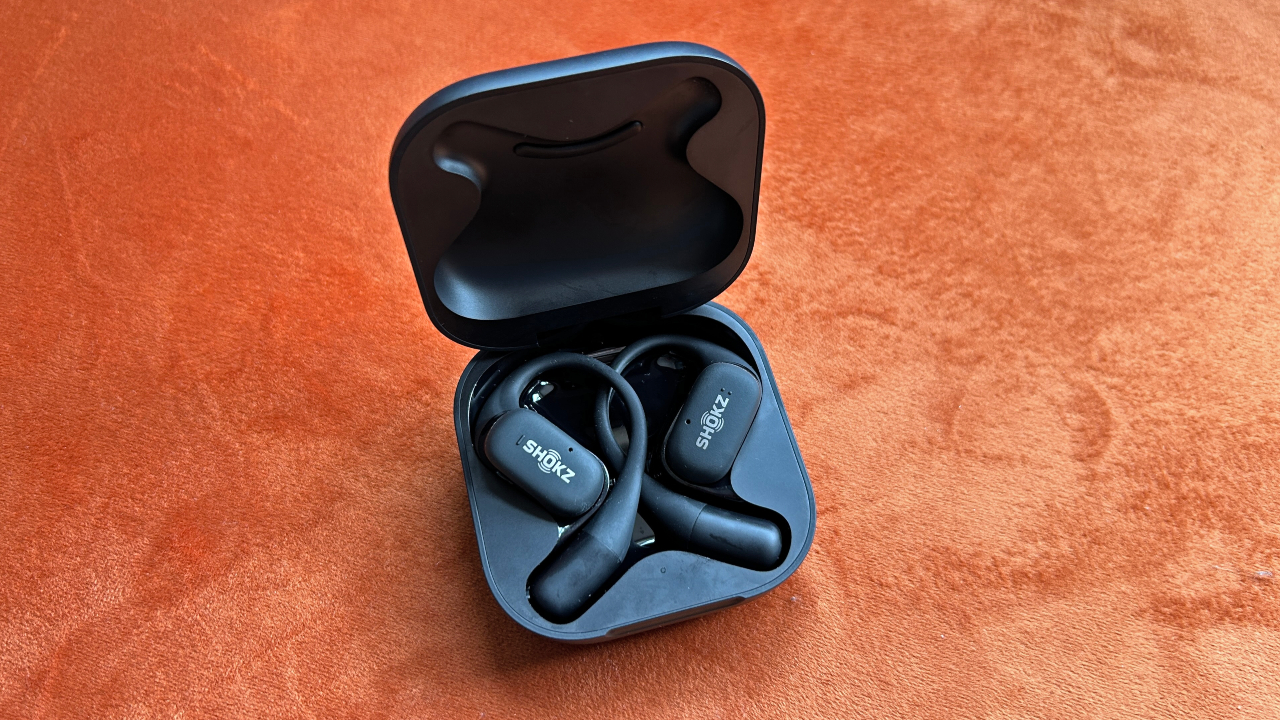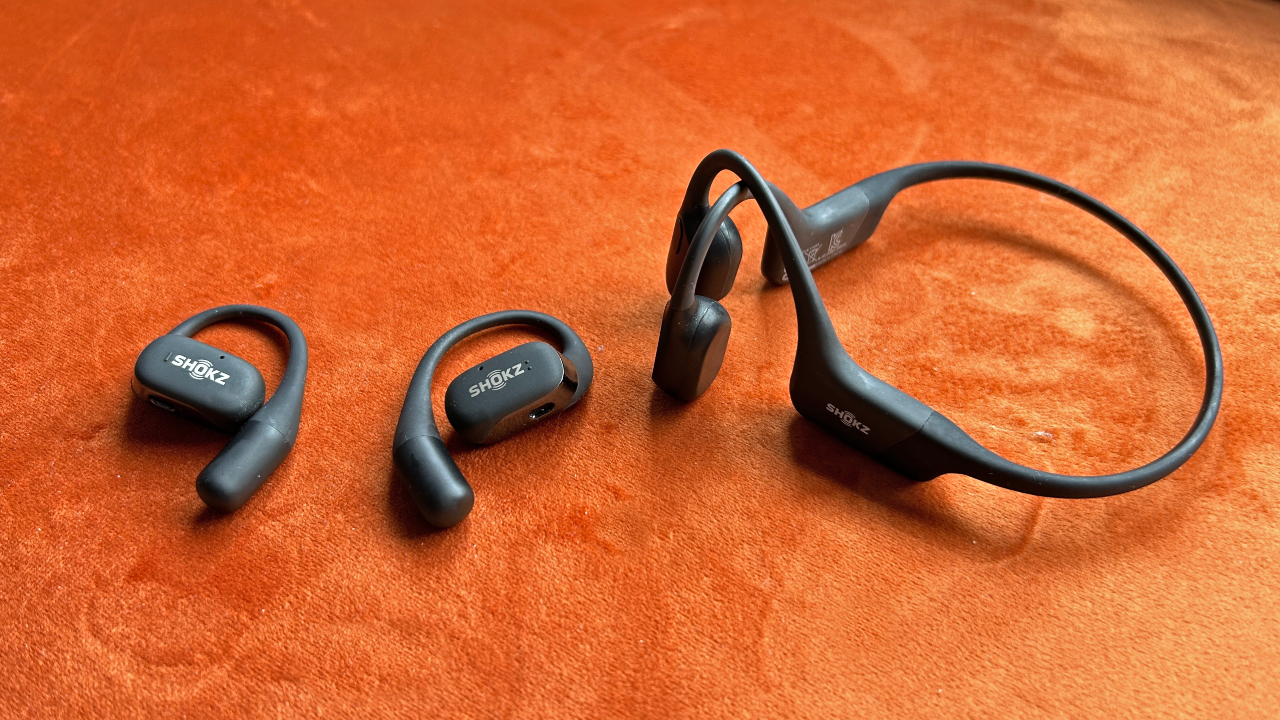Our Verdict
The Shokz OpenFit buds offer better sound quality than bone conduction headphones and when I tested them while doing sports, the fit was excellent. However, they are expensive and still don’t match the sound quality of in-ear buds, while bone conduction headphones offer more awareness of your surroundings and a better fit.
For
- Good sound quality
- Comfortable fit
- Long battery life
Against
- In-ear buds sound better
- Fit not secure for everyone
- Not great for traveling
You can trust Coach
Shokz is the biggest name in bone conduction headphones, and models like the Shokz OpenRun are firmly among the best workout headphones. The Shokz OpenFit are the brand’s first air conduction headphones and are an attempt to rival similar buds, such as the Cleer Arc II and Oladance Open Ear headphones.
For the most part, the Shokz OpenFit are a success. They sound better than bone conduction headphones while offering awareness of your surroundings. I found the fit excellent, though I know others have struggled with that. I consider them among the best running headphones but they are a niche product, since they still aren’t ideal for lifestyle use because the open design can be problematic, particularly when traveling.
Shokz OpenFit Review: Price And Availability
The Shokz OpenFit launched in June 2023 and cost $179.95 in the US and £179 in the UK. That’s more expensive than any of Shokz’s bone conduction headphones, with the OpenRun Pro costing $159.95/£159.95.
Design And Fit

Unlike Shokz’s bone conduction headphones, which have a band design that hooks over your ears, the OpenFit buds are individual headphones, and each hooks over the top of your ear so that a speaker rests near the ear canal. This is how sound is delivered without blocking the ears, whereas with bone conduction it’s achieved through vibrating pads that rest on your cheekbones. This air-conduction approach isn’t new—others like Cleer and Bose have used it in recent years.
The silicone hook on the headphones is flexible and I found the fit superb. It was secure enough for a variety of workouts including running, while also being comfortable over long periods. The OpenFit are the most comfortable and unobtrusive open hook headphones I’ve tested. Others, like the Cleer Arc II, put pressure on the tops of my ears. However, other reviewers have found the OpenFit loose, and not ideal for sports use as a result.
The buds have an IP54 water-resistance rating, which is not as high as the ratings on the OpenRun and OpenRun Pro headphones, but is still good enough to ensure they will withstand sweat and rain.
There are touchpads on the outside of the headphones that control playback, with taps and holds. You can customize the controls on the headphones with the Shokz app, but you’re limited to two controls per earbud—one for a double tap and one for a hold. These controls can include volume, as well as play/pause and skip, and you can activate your phone’s voice assistant using them.
Sign up for workout ideas, training advice, reviews of the latest gear and more.
Sound Quality

The OpenFit introduce Shokz’s DirectPitch technology for audio and have a fuller, more powerful sound profile than the brand’s bone conduction buds, which made it enjoyable to listen to a wide variety of music. You can customize the EQ of the headphones in the app, and that includes a bass boost option that delivers booming bass—or as booming as it gets in open headphones.
They are also loud enough to use when running by or cycling on busy roads, which is not the case with bone conduction headphones in my experience. The trade-off is that you’re less aware of your surroundings than when using bone conduction headphones—the OpenFit sit between in-ear and bone conduction buds in this aspect.
When traveling on trains, however, music and podcasts fade into the background because of the open design. I missed having in-ear buds for these situations.
Otherwise, I was happy to use the OpenFit as my main headphones all the time because of the upgrade in sound quality they offer—and they don’t leak sound to annoy those around you. More committed audiophiles will miss the extra power and clarity of the best in-ear headphones.
Battery Life

The OpenFit headphones have a carry case that is also a charger and, Shokz says, 28 hours of battery life. The buds hold seven, with a further 21 hours from the case, and a five-minute charge is meant to yield one hour of playback. I found that the actual battery life depends on what you’re listening to, and the EQ you use. When I stuck with the standard EQ and mostly listened to podcasts I’d get the numbers listed by Shokz, but when I turned on the bass boost, increased the volume to the max and listened to music, the battery life fell.
With a mix of sports and lifestyle use the OpenFit still lasted me a couple of weeks, and the battery life boost you get from having a case-charger means they are more convenient than Shokz’s bone conduction bands—which last longer on charge than the OpenFit headphones, but have to be plugged in directly more frequently than the OpenFit case.
Shokz OpenFit vs Shokz OpenRun Pro and OpenRun
I’ve been using the Shokz OpenRun Mini (which are the same as the OpenRun but with a shorter band, so they stick out less) as my main running headphones this year, and the OpenFit are an upgrade in sound quality. The convenience of having a case-charger is also useful.
When doing hard runs I often go to a flat area that has sections by a busy road where I can’t hear audio on the OpenRun and OpenRun Pro, but this was not a problem with the OpenFit. In fact, I have to turn the music down on the OpenFit when running on a road because I’m less aware of what’s around me than when using the OpenRun buds.

The OpenRun headphones are comfortable and secure and I don’t really notice them when wearing them, but that’s also true of the OpenFit buds for me—even if I know others have found them looser than the OpenRun band design.
Cost is a major factor when comparing the two, since the OpenRun Pro and OpenRun headphones are cheaper than the OpenFit. The OpenRun headphones are $50/£50 less than the OpenFit, and I consider them a better-value pick.
Although the OpenFit are better for lifestyle use, they still fall short on this front in certain situations such as traveling. You may find that choosing the OpenRun over the OpenFit for situations when you need more awareness and then putting the money you save towards some in-ear buds for situations when those are preferable is a more satisfying all-round solution.
Are The Shokz OpenFit Worth It?
If the fit works for you as well as it has for me, the Shokz OpenFit headphones are excellent for sports and have benefits for general use as well, even though there were times when I craved the better sound and noise cancellation of in-ear buds.
They offer a nice balance of sound quality and awareness that tilts more towards the former than bone conduction headphones, and are the best all-round open headphones I’ve tried. The Cleer Arc II headphones offer marginally better sound, but the fit was uncomfortable for me. That said, if you find the OpenFit loose, the stronger ear clip design of the Cleer Arc II may be better.
The price is high, however, and there is a case for getting the cheaper Shokz OpenRun if you need open headphones. You can also get in-ear buds with great sound and transparency modes like the Jabra Elite 4 Active for less than the OpenFit, though the truly open design of the OpenFit is better for awareness than these transparency modes.

Nick Harris-Fry is a journalist who has been covering health and fitness since 2015. Nick is an avid runner, covering 70-110km a week, which gives him ample opportunity to test a wide range of running shoes and running gear. He is also the chief tester for fitness trackers and running watches, treadmills and exercise bikes, and workout headphones.

